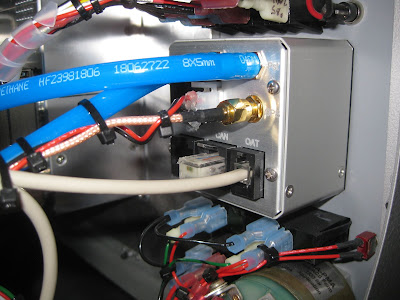On 12-Sep-18, I received my Kanardia Horis 57. It is to replace my TruTrak ADI2 on my panel. The ADI2 is a solid instrument, however I like the additional information provided by the Horis. It came to $1,040 plus $70 shipping minus $64 for exclusion of GPS antenna (can use the one from my ADI2) and remuneration for potential import fees.
It's a very capable device. The following are just some examples, rather than a complete list:
- Attitude
- Roll, pitch
- Airspeed
- IAS and TAS
- Vertical speed
- Altitude
- OAT
- Altimeter setting
- G meter
- Heading rate (1 minute and 30 second turn)
- Tracking course
- True or magnetic (with optional magnetometer)
- Includes additional separate directional indicator function
- Wind speed (with optional magnetometer)
I installed it on 4-Nov-18. I placed the OAT sensor on the right wing on the inboard inspection plate (I didn't want to drill into the wing skin) and ran the cable through the upper aft bushings, under the right seat pan, up the tunnel and over to the instrument.
For reference, here is the OAT sensor pinout diagram. It uses a 4C4P RJ-10 (also known as RJ-9 and RJ-22) connector. I had to lop it off and replace it in order to negotiate the cable through the airframe. I also had to buy a new crimper for the little connector.
Here is the rear of the instrument as installed. The Horis uses 5 mm ID connections. So I snagged some 8 mm OD, 5 mm ID nylon tubing and 5/16" to 1/4" couplings (5/16" is 7.9375 mm) to connect to my 1/4" OD pitot static system tubing.
Here it is in flight. I need to calibrate the altitude as it's about 300 feet off.








No comments:
Post a Comment